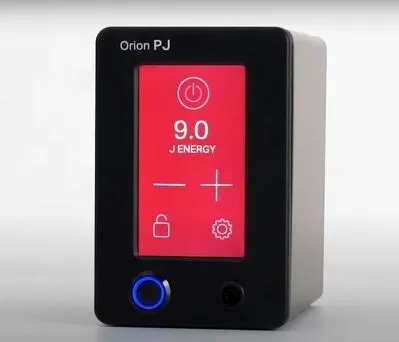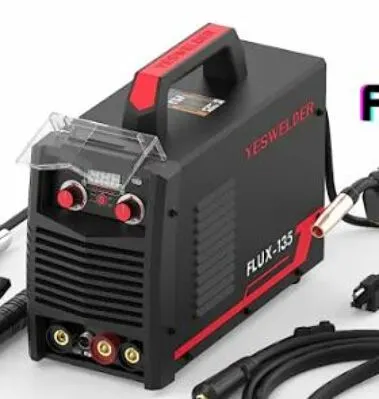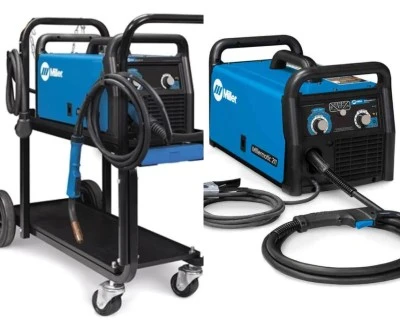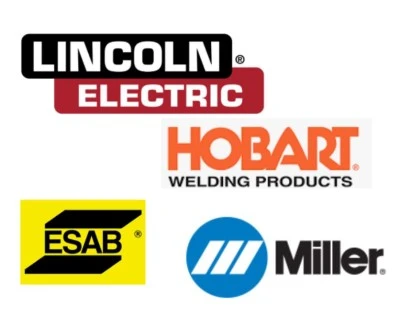Between Sparks and Arcs: Deciphering the Dual Wonders of Millermatic 211 vs 215

In the realm of welding, selecting the right equipment is pivotal for both quality and efficiency. The debate often centers on finding a machine that balances power with precision. Two prominent contenders in this space are the Millermatic models 211 and 215. Each boasts unique features tailored to specific needs, making the choice between them more than just a matter of preference. This article aims to dissect their capabilities and highlight distinctions that can guide professionals and hobbyists alike.
As an Amazon Associate, we earn a commission from qualifying purchases.
I. Introduction
A. Overview of Welding Equipment Importance
Welding is a cornerstone in the world of manufacturing, maintenance, and creative metalwork. The art and science of joining metals demand not only skill but also the right tools. High-quality welding equipment can significantly influence the outcome, ensuring the strength, durability, and aesthetic appeal of the final product. With advancements in technology, welders are now equipped with sophisticated machines that offer precision, versatility, and efficiency, making the choice of equipment more crucial than ever.
B. Focus on Millermatic 211 and 215 Comparison
Among the myriad options available in the market, the Millermatic 211 and 215 have emerged as prominent figures, particularly for those seeking reliability and performance. These models are heralded for their advanced capabilities and cater to a diverse range of welding needs, from amateur projects to professional applications. This article aims to dissect and compare these two models, offering insights into their technicalities, user experience, and overall value, guiding you toward making an informed decision.
II. Detailed Analysis of Millermatic 211
A. Technical Specifications
The Millermatic 211 stands out with its Advanced Auto-Set feature, a breakthrough in welding technology that automatically adjusts to the correct parameters, ensuring optimal performance. It boasts a multi-voltage plug (MVP), allowing operation on 120 or 240 V, providing flexibility and ease of use in various settings. Its maximum power output of 230A caters to welding materials of different thicknesses, making it a versatile choice for various projects.
B. User Experience and Usability
Ease of use is a key feature of the Millermatic 211. Its intuitive interface allows even novice welders to navigate through settings effortlessly. The machine’s lightweight design and portability make it an excellent choice for on-site jobs, offering convenience without compromising on power. Additionally, its fan-on-demand cooling system operates only when needed, reducing noise, power consumption, and the ingress of contaminants.
C. Pros and Cons
The Millermatic 211 is lauded for its versatility and ease of use. The Auto-Set feature and the MVP make it adaptable and user-friendly. However, some users might find the initial cost steep. Despite this, its durability and performance offer long-term value, making it a worthy investment for serious welders.
III. In-depth Look at Millermatic 215
A. Technical Specifications
The Millermatic 215 is another powerhouse known for its all-in-one versatility. It can perform MIG, TIG, and Stick welding, making it a multi-process machine that’s ideal for users looking for comprehensive capabilities. Like the 211, it also features a multi-voltage plug and operates between 120V and 240V. With a slightly higher output of up to 240A, it’s capable of handling more demanding tasks.
B. User Experience and Usability
The Millermatic 215’s user experience is noteworthy for its simplicity and efficiency. The color LCD screen and intuitive interface make setup and operation straightforward, even for less experienced users. The machine’s Quick Select drive roll offers smooth and stable wire feeding, enhancing the welding experience and reducing the potential for errors.
C. Pros and Cons
The versatility of the Millermatic 215 is its most significant advantage, allowing users to switch between different welding processes easily. The high output power supports welding thicker materials effectively. However, the multifunctionality comes at a higher price point, and the machine is slightly heavier than its counterpart, which could be a consideration for those who need maximum portability.
IV. Comparative Analysis: Millermatic 211 vs 215
A. Performance Comparison
When comparing performance, both machines offer exceptional quality and efficiency. The Millermatic 211 is known for its precision and ease, suitable for both beginners and experienced welders. The 215, with its higher power output and multi-process capabilities, is more suited for complex, heavy-duty tasks and offers more flexibility for those tackling a variety of projects.
B. Versatility and Suitability for Different Projects
The Millermatic 211 is ideal for those who primarily engage in MIG welding and value portability and ease of use. In contrast, the 215’s ability to handle MIG, TIG, and Stick welding makes it a more versatile choice for professionals or enthusiasts who require a more comprehensive range of welding options.
C. Cost-Efficiency and Value for Money
Both models are investments in quality and performance. The Millermatic 211, with its user-friendly features and robust build, offers great value for those who need a reliable, versatile MIG welder. The 215, though more costly, provides expanded capabilities and power, justifying its price for those who need the additional features and flexibility it offers.
V. FAQs
Q: What are the primary differences between Millermatic 211 and 215?
A: The Millermatic 211 is known for its Advanced Auto-Set feature and flexibility with a multi-voltage plug, making it suitable for various projects. On the other hand, the Millermatic 215 offers multi-process capabilities (MIG, TIG, and Stick welding), a slightly higher output, and a comprehensive color LCD screen for easy setup and use.
Q: Can Millermatic 211 and 215 handle both thin and thick materials?
A: Yes, both models are designed to handle materials of varying thicknesses. The Millermatic 211 can weld materials from 24-gauge to 3/8-inch thick in a single pass, while the 215’s higher output allows it to handle even more demanding tasks.
Q: Are the Millermatic 211 and 215 suitable for beginners?
A: Absolutely. Both models are user-friendly. The Millermatic 211, with its Advanced Auto-Set feature, is particularly notable for its ease of use. At the same time, the 215 has an intuitive color LCD screen, making setup and operation straightforward for beginners.
Q: What are the portability features of the Millermatic 211 and 215?
A: The Millermatic 211 is praised for its lightweight design and portability, ideal for on-site jobs. While the 215 is slightly heavier due to its additional features, it remains a portable option for those needing a comprehensive welding solution on the move.
Q: How do the costs of Millermatic 211 and 215 compare?
A: The Millermatic 211 is generally more cost-efficient, especially for those primarily interested in MIG welding. The 215, with its multi-process capabilities and higher power output, comes at a higher price point, offering a broader range of welding options and thus justifying its cost.
Q: How does Millermatic 141 compare to 211?
A: The Millermatic 141 is an earlier model that is generally considered a step before the 211. Like the 211, it’s suitable for lighter tasks and known for its user-friendliness and portability. However, the 211 offers more advanced features, higher power output, and greater versatility.
Q: How does the Lincoln 180 MIG Welder compare to the Millermatic models?
A: The Lincoln 180 MIG Welder is another strong contender in the welding market, known for its robust construction and reliability. It shares many features with the Millermatic models, such as versatility and the ability to weld different materials, so the choice between them may come down to specific user preferences, brand loyalty, or particular features.
VI. Conclusion
A. Summary of Key Differences
The Millermatic 211 and 215 are both stellar models, each bringing unique strengths to the table. The 211 excels in user-friendliness, portability, and cost-efficiency, making it ideal for both beginners and experienced welders focusing on MIG welding. The 215, with its higher output and multi-process capabilities, offers greater versatility and is well-suited for more complex, demanding welding tasks.
B. Recommendations for Specific User Needs
The Millermatic 211 is an excellent choice for those who prioritize ease of use and portability for primarily MIG welding tasks. However, if your projects require a broader range of welding processes and you’re looking for a machine that can handle more heavy-duty tasks, the Millermatic 215 would be the more suitable option despite its higher cost.
VII. Suggested Readings
Embarking on or advancing in the welding profession is a continuous learning journey. Here are five recommended books that can offer valuable insights and knowledge:
- “Learn to Weld: Beginning MIG Welding and Metal Fabrication Basics” by Stephen Christena: A comprehensive guide to MIG welding and metal fabrication, featuring illustrated tutorials and essential safety information.
- “Welding for Dummies” by Steven Robert Farnsworth: Offers straightforward advice on various welding projects, covering MIG, TIG, stick, and flux-core welding.
- “Farm and Workshop Welding: Everything You Need to Know to Weld, Cut, and Shape Metal” by Andrew Pearce: Provides detailed information on various welding techniques, safety, and even includes a section on basic blacksmithing.
- “How To Weld (Motorbooks Workshop)” by Todd Bridgum: Explains welding tools and equipment, with chapters on various welding techniques and exercises to practice your skills.
- “Welding Fundamentals” by William A. Bowditch: Aimed at junior high students, this book covers various welding techniques and contains plenty of technical information on weld testing, inspection, and safety.
These recommended books serve as a rich resource for anyone on the welding journey, whether you’re just sparking your interest or looking to refine your skills. Each title offers a unique perspective, blending foundational techniques with advanced insights, ensuring a well-rounded understanding of the art and science of welding.






